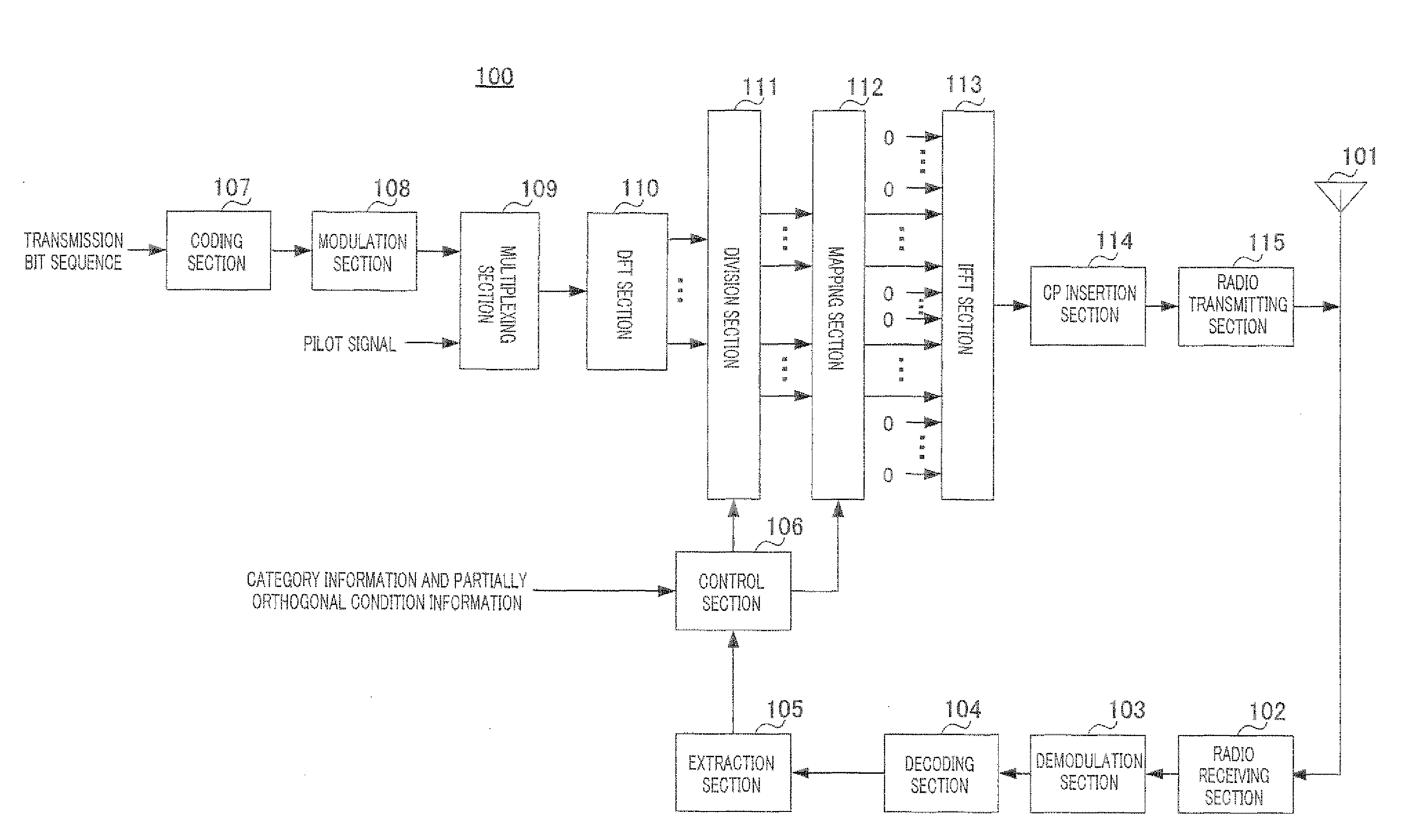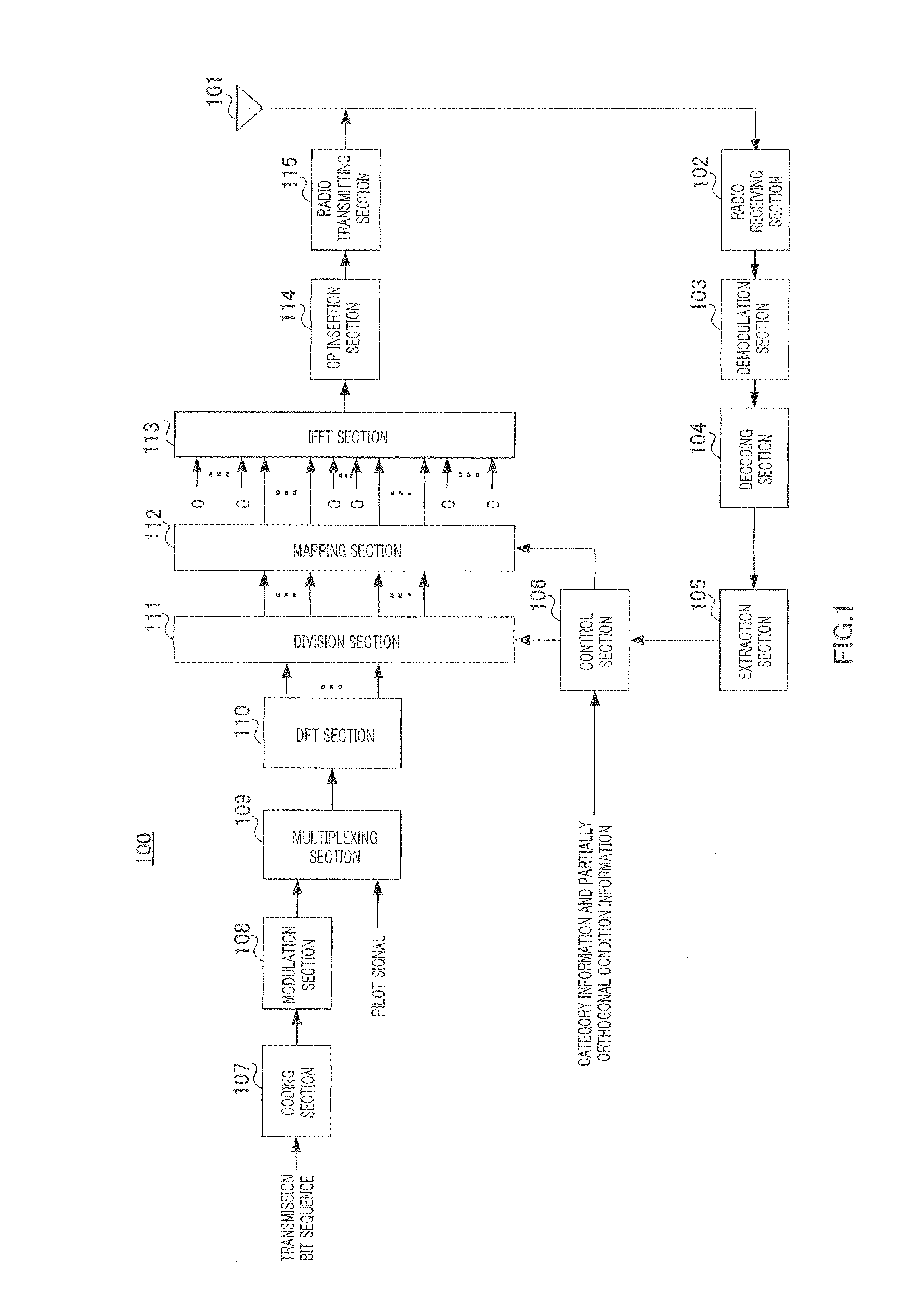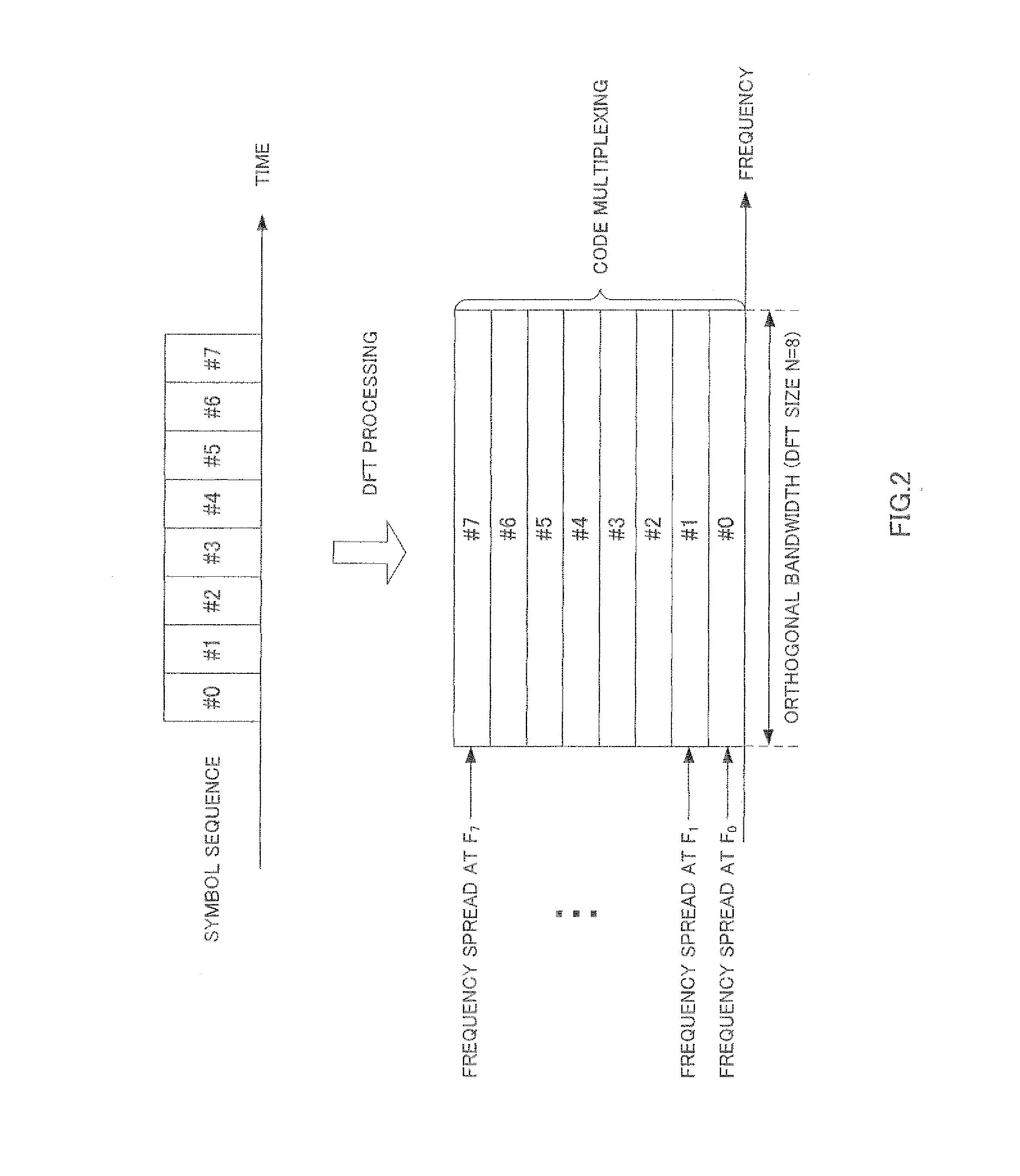Radio communication device and signal division method
a radio communication device and signal division technology, applied in the direction of frequency-division multiplex, orthogonal multiplex, instruments, etc., can solve the problems of worse frequency resource utilization efficiency, and achieve the effect of reducing isi and reducing the loss of orthogonality of a dft matrix
- Summary
- Abstract
- Description
- Claims
- Application Information
AI Technical Summary
Benefits of technology
Problems solved by technology
Method used
Image
Examples
embodiment 1
[0058]FIG. 1 shows a configuration of terminal 100 according to the present embodiment.
[0059]In terminal 100, radio receiving section 102 receives a control signal transmitted from a base station (not shown) via antenna 101, applies reception processing such as down-conversion and A / D conversion to the control signal and outputs the control signal subjected to the reception processing to demodulation section 103. This control signal includes frequency resource information showing uplink frequency resources allocated to each terminal and MCS information showing MCS (Modulation and channel Coding Scheme) set in each terminal.
[0060]Demodulation section 103 demodulates the control signal and outputs the demodulated control signal to decoding section 104.
[0061]Decoding section 104 decodes the control signal and outputs the decoded control signal to extraction section 105.
[0062]Extraction section 105 extracts frequency resource information directed to terminal 100 included in the control ...
embodiment 2
[0137]The present embodiment will describe a case where MIMO (Multi-Input Multi-Output) transmission, which is one of transmission techniques for realizing high-speed, large-volume data transmission, is used. The MIMO transmission technique provides a plurality of antennas for both a base station and a terminal, provides a plurality of propagation paths (streams) in a space between radio transmission / reception, spatially multiplexes the respective streams, and can thereby increase throughput.
[0138]This will be described more specifically below. FIG. 9 shows a configuration of terminal 200 according to the present embodiment. Terminal 200 is provided with two antennas (antennas 101-1 and 101-2) that transmit C-SC-FDMA signals (a plurality of clusters) using two streams (stream #1 and stream #2).
[0139]Furthermore, terminal 200 includes C-SC-FDMA processing sections 201-1 and 201-2 made up of coding section 107, modulation section 108, multiplexing section 109, DFT section 110 and divi...
embodiment 3
[0156]A case has been described in Embodiment 2 where when FSTD (Frequency Switched Transmit Diversity) is used, a terminal switches between transmitting antennas for each frequency band (or cluster) having a partially orthogonal bandwidth. Furthermore, in this case, a case has been described where a plurality of clusters are mapped to non-continuous frequency bands when viewed in the frequency domain of all transmitting antennas. By contrast, in the present embodiment, when using FSTD that switches between transmitting antennas for each frequency band (or cluster) having a partially orthogonal bandwidth, a terminal maps a plurality of clusters to continuous frequency bands when viewed in the frequency domain of all transmitting antennas.
[0157]That is, when FSTD is used in Embodiment 2, as shown in FIG. 11, clusters having partially orthogonal bandwidths mapped to the respective antennas are mapped to non-continuous frequency bands and a plurality of clusters are mapped to non-conti...
PUM
 Login to View More
Login to View More Abstract
Description
Claims
Application Information
 Login to View More
Login to View More - R&D
- Intellectual Property
- Life Sciences
- Materials
- Tech Scout
- Unparalleled Data Quality
- Higher Quality Content
- 60% Fewer Hallucinations
Browse by: Latest US Patents, China's latest patents, Technical Efficacy Thesaurus, Application Domain, Technology Topic, Popular Technical Reports.
© 2025 PatSnap. All rights reserved.Legal|Privacy policy|Modern Slavery Act Transparency Statement|Sitemap|About US| Contact US: help@patsnap.com



